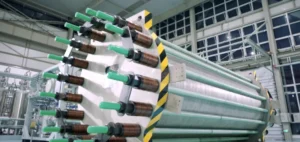Ohmium has signed a contract with Tarafert for the production of 343 MW of renewable hydrogen. The partnership is expected to provide an annual volume of 200,000 tons of low-carbon ammonia per year. The electrolysers will be deployed in three phases, with the first delivery of 69 MW planned for 2025.
Ohmium wants to move away from fossil fuels
This project marks the desire of both companies to free themselves from the constraints of producing ammonia from fossil fuels. The production of renewable hydrogen makes it possible not to depend on a limited and considerably polluting resource.
Ohmium International’s director, Arne Ballantine, says:
“The ammonia shortages that have occurred this year have shown how important it is for countries to develop their own production that does not rely on fossil fuels. The Tarafert project is one of the most ambitious in the world and we are delighted to be involved. For too long, ammonia production has been an energy-intensive process that produces tons of greenhouse gases. Renewable hydrogen can reduce those carbon emissions to zero.”
Economic benefits
By investing in renewable hydrogen, Ohmium is betting on a promising source of energy in a context of energy and environmental crisis. Tarafert’s General Manager, Jean Perarnaud, confirms the stakes of this partnership:
“The use of low-carbon hydrogen for ammonia production is a major benefit to this project.”
In addition, he points out two significant advantages of green ammonia. It will not be affected by price volatility. In addition, there is an ecological interest.
Finally, the PEMs produced by Ohmium allow the production of renewable hydrogen at reduced cost.
PEM technology, the centerpiece of the project
Ohmium produces modular interlocking PEM electrolyzers generating hydrogen of very high purity. The combination of individual electrolysers significantly reduces installation and maintenance costs and allows unlimited configuration possibilities.
The diaphragm can withstand differentiated pressure without risk of promission thanks to Ohmium’s proprietary Stack technology. This feature contributes to the optimization of operating costs.
According to Jean Perarnaud, this technology is a “perfect choice” for this project. In fact, it will be able to support its expansion phases.






















